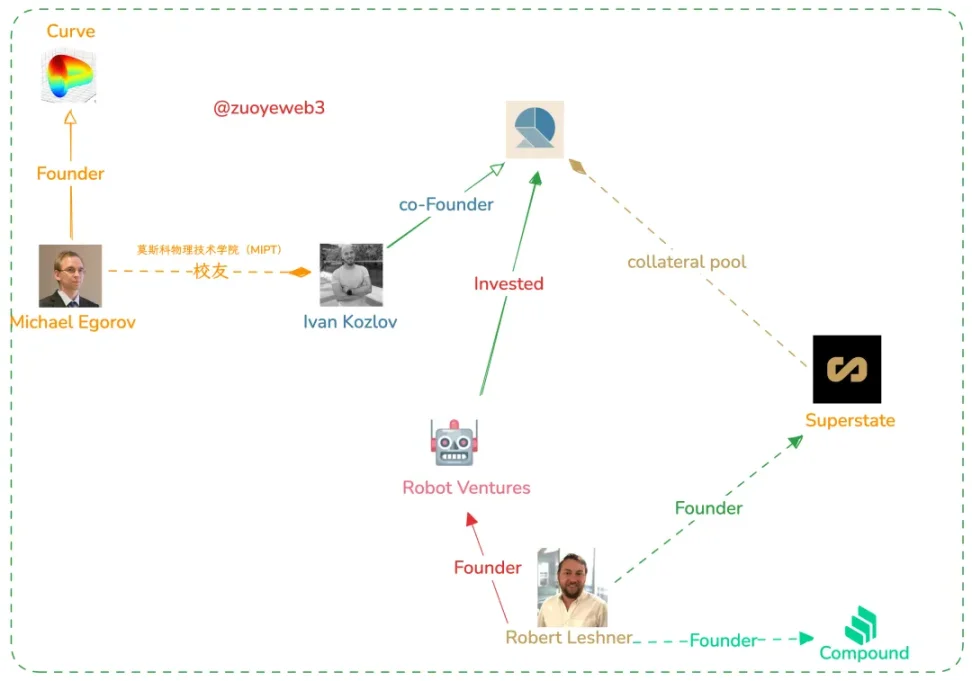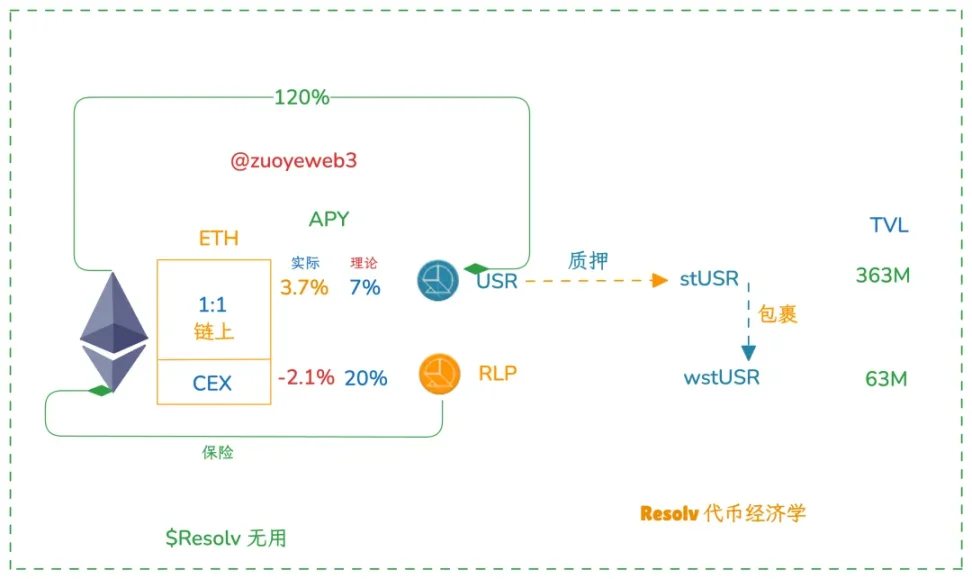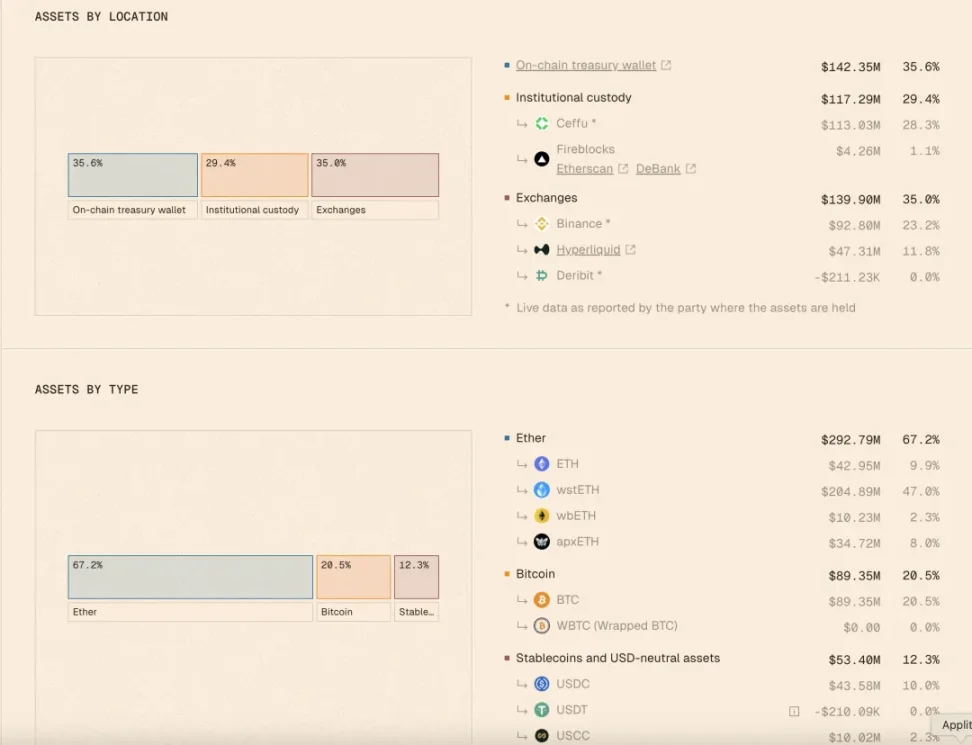Once big funds have their own choices, the market for small funds is vacated.
In this cycle, both bull and bear markets are busy. VC, KOL and stablecoins are the three major trends. Among them, KOL itself is also an asset that can be tokenized.
As VCs face increasingly limited choices, they are targeting stablecoins and “simple investment” products to build momentum, and reinvesting in projects that have already issued coins. These are all options with lower risks and more certain returns.
On April 16, the on-chain Delta neutral interest-bearing stablecoin (YBS) project Resolv completed a $10 million seed round of financing led by Maven11. This is also its first public financing since its establishment in 2023.
Compared to Ethena's rapid development, Resolv is relatively low-key, but its innovations are not inferior to any of its peers. In summary, it can be divided into: a more unique revenue model, more on-chain revenue sources, and more complex token economics.
Russian geeks' American gold rush dream
Trump's gesture of goodwill led to the restoration of the Russians' nationality.
Maven11, the lead investor in this round, is based in the Netherlands. Participating funds such as Robot Ventures are mostly American-funded. The three founders of Resolv, Ivan Kozlov, Fedor Chmilevfa, and Tim Shekikhachev, are all science majors educated in Russia.
There is reason to suspect that this financing was completed long ago, but was not announced to avoid suspicion. Considering that Ethena needs exchange VC support, the YBS project at least needs a sum of working capital to deal with black swan events.

Image description: Social engineering diagram of the Resolv founding team, Image source: @zuoyeweb3
Is it feasible on-chain? Ethena thinks it is not possible. Arthur Hayes believes that it is necessary to form an alliance of interests with CEX to stabilize the liquidity of USDe. ENA is thus exchanged to VCs of various exchanges in exchange for the long-term stability of the agreement by transferring the right to mint coins.
Turning to Resolv, compared with Ethena's compromising attitude, Resolv as a whole embraces the on-chain ecosystem and is determined to seize the market with higher returns.
More complex token economics
Unlike Ethena's dual-token mechanism of stablecoin + governance token, Resolv actually has three tokens, namely the stablecoin USR, the insurance fund and LP Token RLP, and the governance token $RESOLV.

Image caption: Resolv token economics, Image source: @zuoyeweb3
It should be noted that Resolv’s governance token does not play a special role in forming an alliance of interests like ENA. Ethena’s ENA is actually a proportional representation of AP (authorized issuer). To put it in an extreme way, ENA has little effect on retail investors, but is very necessary for the operation of the Ethena protocol.
Resolv focuses on the dual-yield token system formed by USR and RLP. After users deposit USDC/USDT/ETH, USR can theoretically be minted at a 1:1 ratio, and most of the assets will be stored in on-chain protocols or Hyperliquid to minimize asset losses caused by CEX hedging.
Resolv has designed the RLP token ingeniously, which is mainly used to cover the funds hedged in CEX. In addition, it has a higher rate of return. The annualized rate of USR is between 7%-10%, while that of RLP is between 20%-30%. However, this is only in theory and has not yet reached the expected value.
More on-chain revenue sources
Compared with Ethena, Resolv is more actively embracing the on-chain ecosystem. From the perspective of revenue, YBS is divided into the income from interest-bearing assets such as stETH, and the hedging fees of CEX contracts.
The on-chain income may be higher than CEX hedging, but the prominent problem is that Hyperliquid's liquidity is obviously not as good as its competitors such as Binance. Currently, the ratio of hedging contracts opened between Binance and Hyperliquid is about 7:3, so the value of RLP lies in this.
RLP is a leveraged yield token that maintains a higher rate of return with less capital. For example, the current RLP TVL is only US$63 million, less than 20% of USR, making it suitable for users with high risk preferences to participate.
A few words of complaint: due to the price trend of ETH, the assumption of YBS that most ETH longs will pay short fees is likely to not hold true for a period of time, and the current return of RLP is negative.
A more unique revenue model
There is not much difference between USR and USDe. The main difference is that Resolv introduced RLP as an insurance mechanism. Since Resolv cannot completely get rid of the participation of off-chain CEX and USDC at present, Resolv hopes to minimize its negative impact.

Image caption: Resolv data, image source: @ResolvLabs
In theory, USR will be entirely over-minted by on-chain assets (currently 120%, of which 40% are on-chain assets), and then part of the minted collateral assets will be used for institutional custody and off-chain CEX hedging.
At this point, Resolv's capital efficiency is obviously not as good as Ethena's fully off-chain CEX hedging, and Resolv's RLP needs to "make up" for this part of the income, at least to be on par with Ethena.
YBS Future Outlook
Ethena only opens the door to YBS, but does not mean the end.
The yield of USR is between 7% and 10%, and the yield of RLP is between 20% and 30%. Then there is risk isolation. For example, 1.2U of ETH and the reserve funds for minting 1USR are hedged on the chain and in Hyperliquid, and 0.2U is used to mint RLP and hedged on Binance.
Even if Binance collapses, USR can guarantee rigid redemption. In fact, the theoretical risk exposure of RLP is 8%. The innovation lies in the fact that Ethena relies entirely on Perp CEX and capital efficiency and security, which is a step forward.
It can also be understood as taking a step back. In Ethena's mechanism, as long as CEX does not launch malicious attacks, there is basically no possibility of a death spiral. In the most extreme case, the Ethena protocol can stabilize the market through negotiations between large users and their own funds. This is exactly the same as when Curve's founder stabilized the coin price through OTC when encountering extreme market conditions.
If Resolv places more revenue and funds on the chain, it will have to face various impacts of the on-chain combination. Binance may not snipe ENA, but it does not mean that it will let Hyperliquid go. You can refer to the previous article on Hyperliquid: 9% Binance, 78% centralization.
After all, in a highly competitive environment, it is often impossible to ensure a balance between security and profitability. Resolve was launched at about the same time as Ethena, but its current TVL and issuance volume are far inferior to Ethena, leaving fewer and fewer options for latecomers.
However, more and more ships will participate in the YBS voyage. In the era of low-interest financial management, the startup cost of the project will be lower than DeFi Summer.
This is rather counterintuitive. It is generally believed that in the DeFi Summer era, as long as there is a product prototype, it will attract capital influx, but don’t forget that the return requirements for farming are often above 20%. UST is a clear example, while Ethena’s benchmark sUSDE is stable below 5%.
In other words, as long as the APY of new YBS entrants can exceed 5%, there will be adventurers participating, retaining the possibility of opening the flywheel. However, how to display more and more YBS in front of retail investors who are not aware of the situation cannot be solved simply by finding KOL promotion and VC endorsement.
Conclusion
The combination of USR and RLP is actually more like a hybrid product of Hyperliquid and Ethena, LP Token + YBS, which I call the Sonic/Berachainization of the YBS ecosystem. They all want to use more complex mechanism design to surpass existing products.
At the same time, risks have clearly increased. Any LP Token mechanism will face the dilemma of creating liquidity for the sake of liquidity, and the insurance mechanism of RLP has not been tested by extreme market conditions, but USDe has experienced depegging.
Depegging is the rite of passage for stablecoins. I hope Resolv can take this step.















